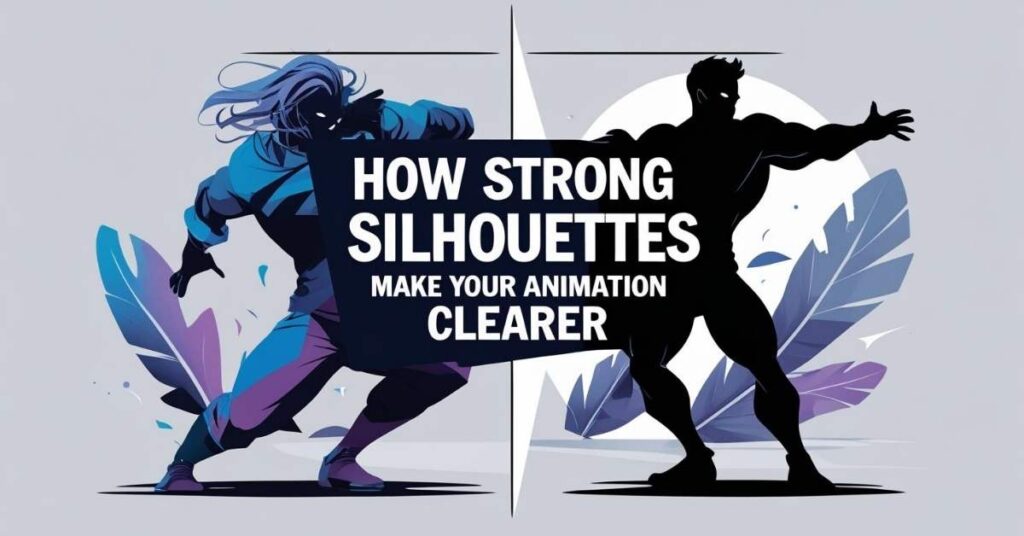Intro:
Before your character says a single word or takes a step, their pose should already tell us what’s going on. That’s the magic of silhouettes in animation. They’re like the visual body language of your character—and getting them right can be the difference between confusing and compelling animation.

What Is a Silhouette in Animation?
A silhouette is the solid outline or shadow of a character pose, with no interior details—just the shape. If you filled in your character with black and removed all facial features, props, and colors, would the pose still read clearly?
If the answer is no, your pose might need some reworking.
A strong silhouette communicates:
- Emotion: Is the character scared, proud, tired, or confident?
- Action: Are they sneaking, sprinting, throwing something, or slouching?
- Clarity: Can the audience understand the idea at a glance, even if the scene is just one frame?
Animators at studios like Disney and Pixar use silhouette tests constantly to improve storytelling through pose. It’s a foundational principle in the 12 Principles of Animation—especially staging and appeal.
How to Make a Strong Silhouette
Here are some tips to boost your poses instantly:
- Think of your character as a shadow puppet. Would the pose make sense if it were all black?
- Separate the limbs from the body. A bent elbow is clearer if the arm isn’t hidden behind the torso.
- Use negative space. That’s the area between arms, legs, or objects. Gaps help define the pose.
- Exaggerate the pose slightly more than you think you need to. Subtlety often vanishes in silhouette form.
- Flip your canvas or use a mirror. If the pose still works in reverse, it’s likely strong and readable.
Still not sure if your silhouette is working? Try filling your character with solid black in your animation software and take a screenshot. If the pose is confusing in shadow form, tweak the body positioning, angles, or spacing.

Final Thoughts
Clarity is king in animation. You want your audience to feel something, and that feeling starts with visual understanding. Whether you’re animating stick figures or detailed characters, strong silhouettes cut through the noise and speak volumes without a single word.
Start looking at your rough poses in silhouette form—and soon, your animation will feel stronger, more confident, and way more watchable.
Sources
- The 12 Principles of Animation – Solid Drawing
Explains why silhouettes and posing matter for character clarity and appeal. - Animation Mentor – Staging
Shows how silhouette and staging help guide the viewer’s eye. - Ctrl+Paint – Drawing Clear Silhouettes
Short video on how to build strong silhouettes when posing characters.


























